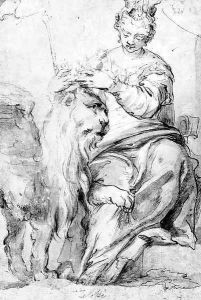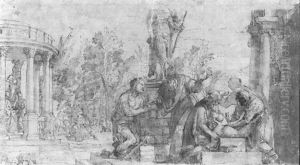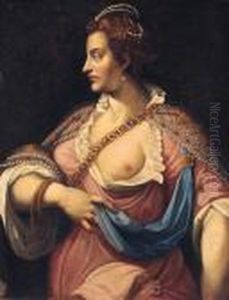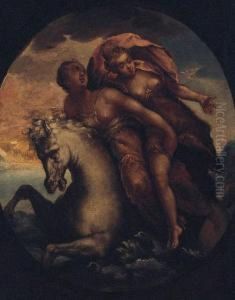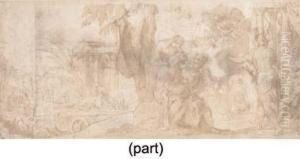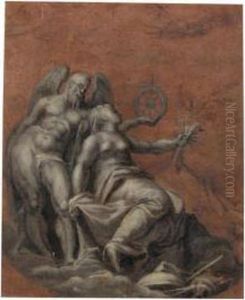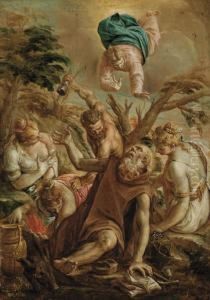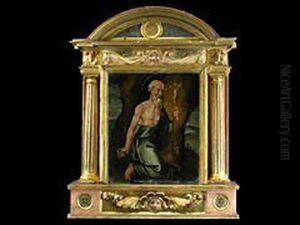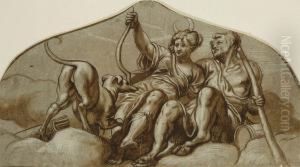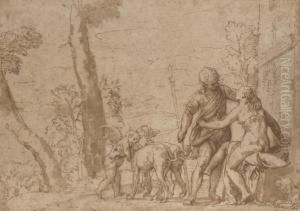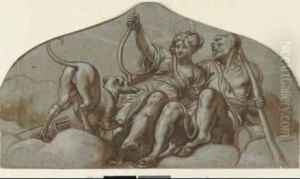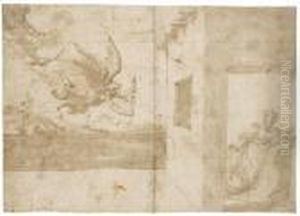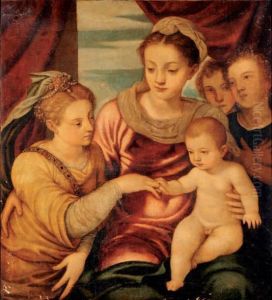Giovanni Battista Zelotti Paintings
Giovanni Battista Zelotti, also known as Battista Farinati, was an Italian painter of the Renaissance period, born in Verona in 1526. He was a contemporary and, in some aspects, a rival of Paolo Veronese, with whom he shared the distinction of being one of the most prominent decorators of the Veneto area during the mid-16th century. Zelotti's early training is somewhat obscure, but it is believed that he was initially a pupil of Antonio Badile, an important Veronese painter, before possibly working alongside Paolo Veronese under the tutelage of Michele Sanmicheli, the renowned architect and painter.
Zelotti's work was characterized by its vibrant colors and the dynamism of its figures, traits that made him a key contributor to the richness of the Venetian Renaissance. He was particularly adept at fresco painting, a skill that led to numerous commissions for decorating the walls and ceilings of many churches and villas in Veneto. His most notable works include the frescoes in Villa Emo at Fanzolo and Villa Soranzo at Treville, both of which display his masterful handling of mythological and historical subjects, imbued with a sense of movement and emotional depth.
Despite his considerable output and the high quality of his work, Zelotti has often been overshadowed by his more famous contemporaries, such as Veronese and Titian, leading to a somewhat undervalued appreciation of his contribution to the Italian Renaissance. Nonetheless, his work remains a significant part of the artistic heritage of the period, exemplifying the vibrancy and inventiveness of 16th-century Venetian art.
Zelotti's career also reflects the broader trends of the Renaissance, including the shift towards Mannerism, as seen in the elongated proportions and complex poses of his later works. His ability to blend the traditional with the innovative, both in terms of technique and subject matter, marks him as a pivotal figure in the transition from the High Renaissance to the Mannerist style.
Giovanni Battista Zelotti died in 1578, leaving behind a legacy that, although somewhat eclipsed by his more famous peers, continues to be revisited and appreciated for its artistic merit and historical importance. His frescoes, in particular, remain a testament to the skill and creativity of an artist who played a vital role in the rich tapestry of Renaissance art.
